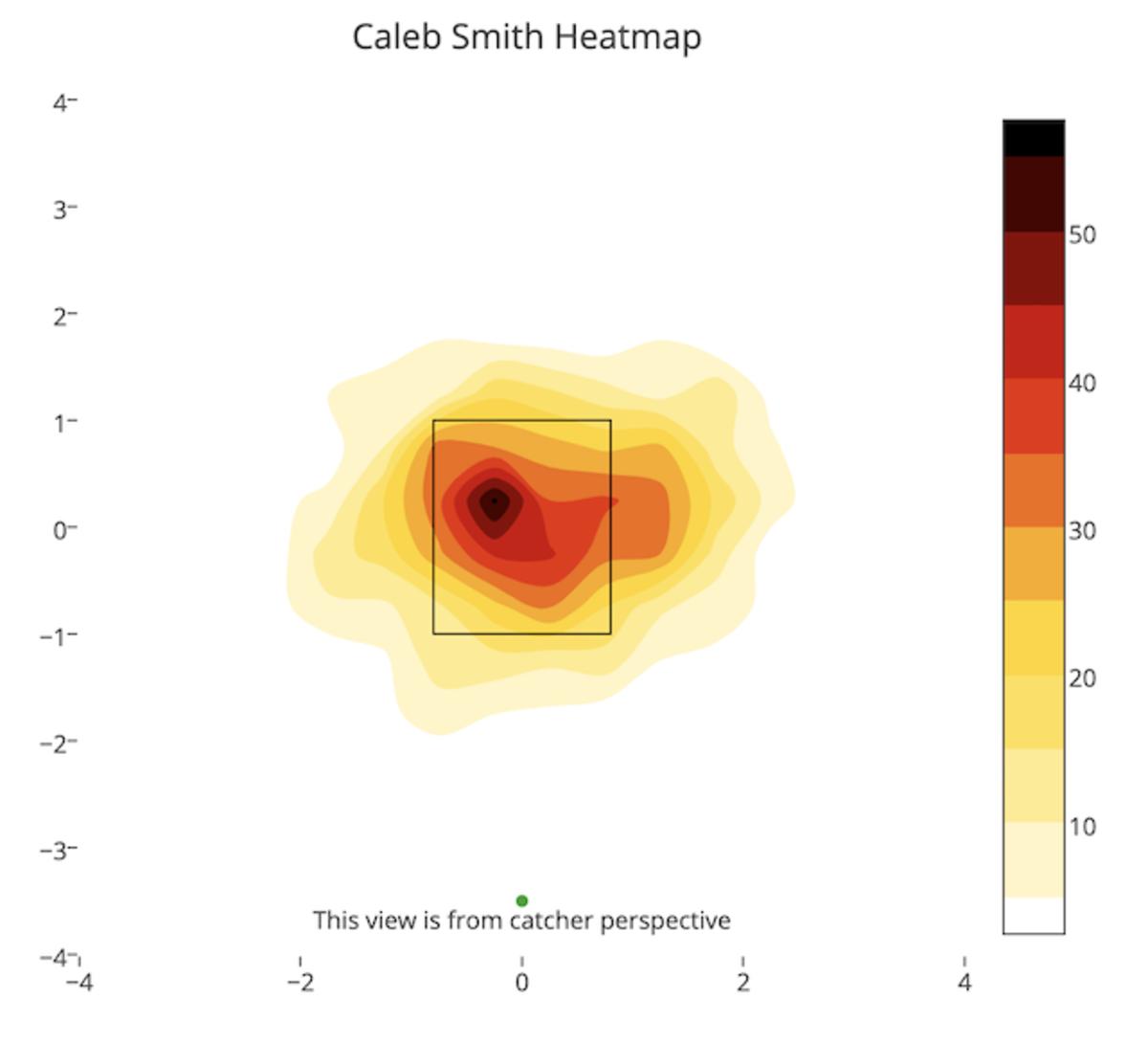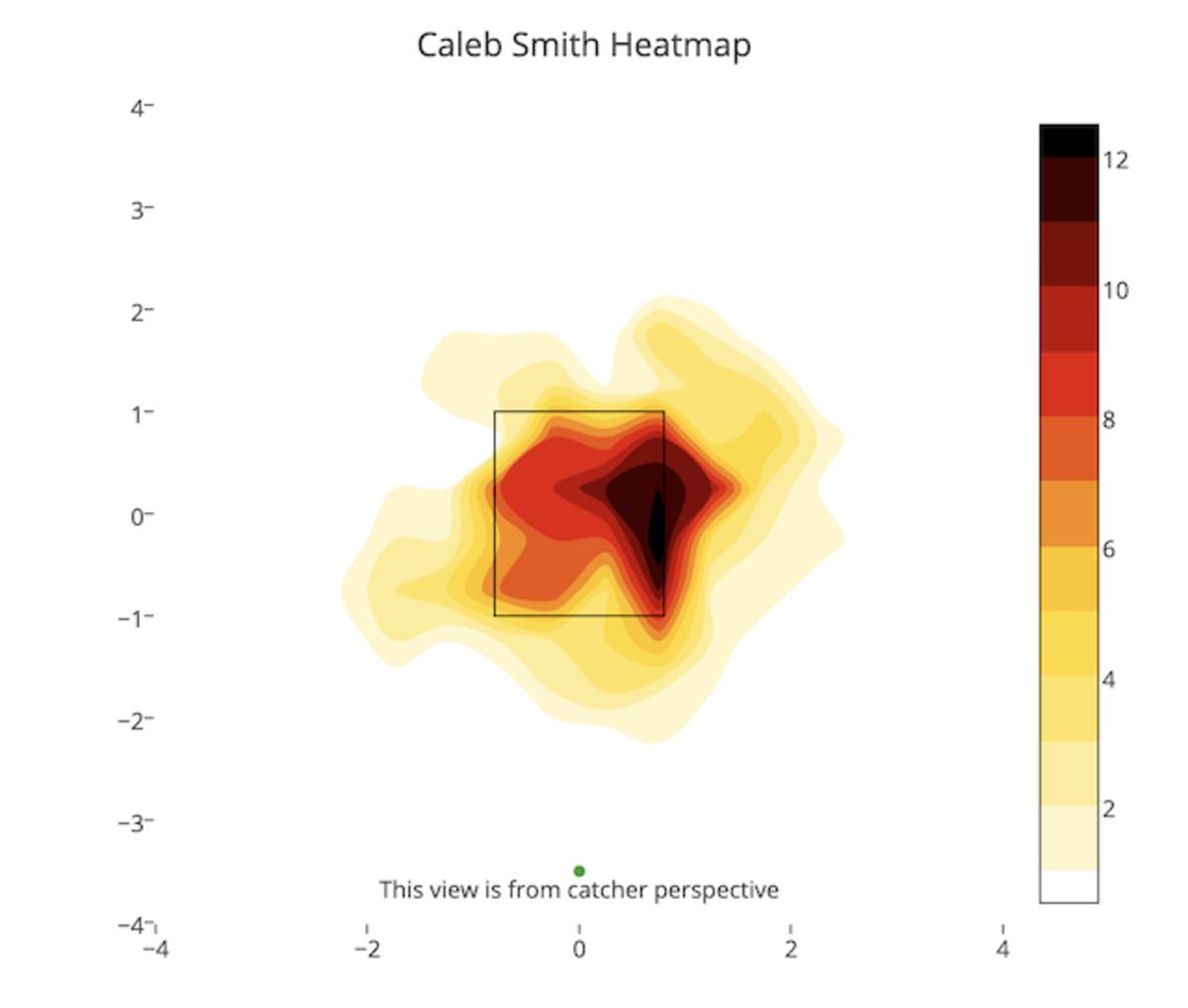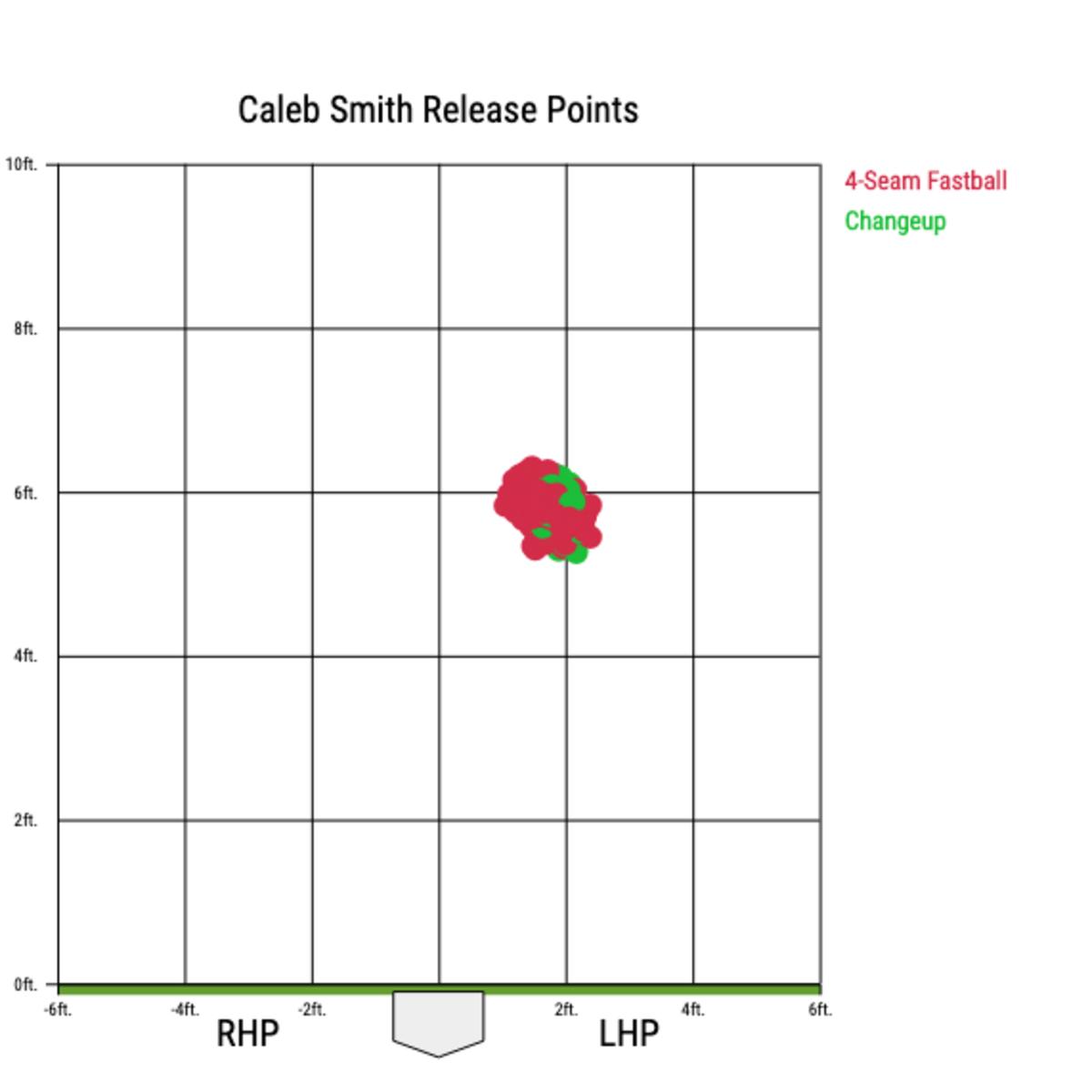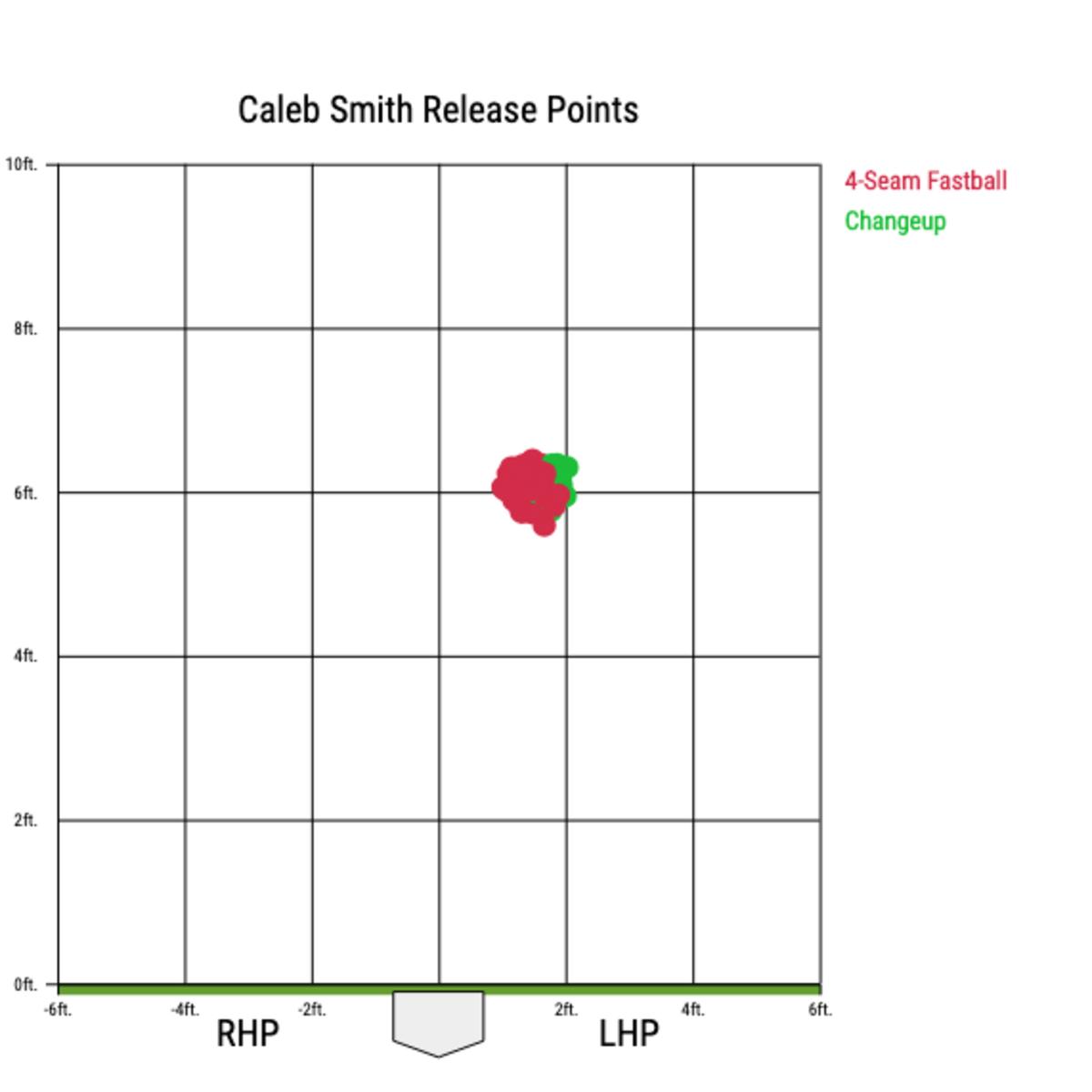Expect Caleb Smith's Impressive Start to Continue for the Marlins

Take a good, long look around MLB this April, and it’s hard to find a pitcher who has had it better than Marlins starter Caleb Smith. Sure, you could tab Tyler Glasnow, Luis Castillo or a few others, but Smith is at least in the discussion. Begin with the surface stats. Through 23 innings and four starts, Smith has a 2.35 ERA, a 0.87 WHIP and 29 strikeouts against six walks. He hasn’t allowed more than three runs or six baserunners in any outing this year. Smith has three quality starts in his four turns to the mound, and he was pinch hit for in the top of the sixth inning in the only outing in which he came up short. He allowed two runs on four hits with eight strikeouts in five innings in that start, his first of the season. In other words, not only are his composite numbers strong, but he has impressed literally every time he has taken the ball this year.
Not to be confused with Abraham Lincoln’s first Secretary of the Interior Caleb Blood Smith, the 27-year-old lefthander’s underlying numbers tell the same story. His strikeout rate is up to 33.3% from 27% last year. His whiff rate has climbed three percentage points to 14.5%. His walk rate is down to 6.9% from a way-too-high 10.1% last season. He’s getting more ground balls and is allowing less hard contact. Statcast has 205 pitchers with at least 30 batted-ball events this season, and Smith has the fifth-lowest hard-hit rate and eighth-lowest average exit velocity. He’s getting whiffs, limiting walks and inducing a ton of soft contact, three factors that strongly suggest his cosmetic numbers are for real.
He also hasn’t made any changes to his repertoire, still throwing a four-seam fastball, slider and changeup. His mechanics in both the windup and stretch are unchanged, too, the proof of which we won’t bog you down with here. Watch video of Smith this season, and he looks exactly the same as he did in 2018, from where he toes the rubber, to where he comes set, to what he does with his hands and lower half as he delivers a pitch.
The big change we’re seeing from Smith this year is in his pitch usage, and the performance of those pitches. Last season, Smith threw his four-seamer 59.1% of the time, his slider 27.2% of the time, and his changeup 13.7% of the time. This year, his four-seamer usage rate is way down to 45.9%, while the slider and change have jumped to 31.6% and 22.5%, respectively. While his slider whiff rate is flat at 16.1%, he’s getting more whiffs with both the four-seamer and change. Smith’s four-seamer has a whiff rate of 16.6%, up from 11.1% last year, and his change is getting empty swings 20% of the time, up from 17.4% last year.
Smith’s four-seam whiff rate is particularly interesting for a couple of reasons. First, you don’t often see a whiff rate that high for a straight fastball. Among pitchers who have thrown at least 100 four-seamers this season, Smith ranks seventh with a whiff per swing rate of 32.9%. The six pitchers ahead of him are Mike Clevinger, Jake Odorizzi, Gerrit Cole, Blake Snell, Matt Boyd and Max Scherzer. Clevinger, Cole, Snell and Scherzer are blowing hitters away with their high-90s heat. Smith, however, averages 92.7 mph with his four-seamer, a slight decrease from last season. How does a pitcher who sits 92-93 mph with his fastball rank among the league leaders in both whiff rate and whiffs per swing with the pitch?
First, let’s start with the changeup. It seems elementary, but we cannot dismiss the benefit of throwing his good changeup more often, especially because it impacts how hitters see his fastball. He has increased his usage rate for his changeup by 64.2% (from 13.7% to 22.5%). It was a good pitch last season, but this year it has become a great one, to which Pete Alonso can attest.
So can J.T. Realmuto.
It’s impossible to overstate just how much the existence of that pitch, and the idea that Smith will throw it about one-fourth of time, can do for his fastball. For proof of that, consider these two changeups to Ronald Acuña Jr. and Freddie Freeman. First of all, changeups are typically weapons for pitchers to use when they lack the platoon advantage, so the mere fact that Smith believes in it enough to throw it to Freeman, a lefthanded hitter, should tell you how good the pitch is. Secondly, changeups are generally at their best when they’re at the bottom of the zone, or just below it. A belt-high changeup is a great way to get burned. Now look at these whiffs from Acuña and Freeman.
Both of those are comfortably in the zone, but they still have the desired effect. Acuña and Freeman looked like hitters geared up for a fastball and were fooled when they instead got a changeup. Once Smith puts that thought in a hitter’s head, he can make a 92-93 mph fastball look more like 94-95. Smith allowed a .266 batting average, .500 slugging percentage and eight homers with his fastball in 2018. This year, they’re hitting .212 with a .333 slugging percentage and one homer against it, to go along with the gaudy whiff and whiff per swing rates. No 92-93 mph fastball can be a whiff pitch without a strong changeup. We have good evidence that Smith has developed one.
The other big difference is command. The following two heat maps come from Statcast, and they represent the four-seamers and changeups that Smith has thrown the last two years. The first one is from 2018, while the second one is from this season.


Look at how extreme that difference is. Last year, Smith lived out over the plate and on the inner-third to righties with his four-seamer and changeup. This year, he’s down in the zone and taking up residence on the outside corner from a righty’s perspective. That’s exactly where a pitcher wants to be when he lacks the platoon advantage with most pitches, but especially fastballs and changeups.
Can we draw a direct line from Smith’s improved command back to a mechanical change? It’s too early to completely let our inhibitions go, but check out Smith’s release point charts from the previous two seasons for just the four-seamer and changeup. Again, 2018 is first.


See how much tighter that grouping is this season? It’s also a bit closer to his body, which suggests that this is a deliberate change, and not merely a small sample or an illusion created by the limitations of a two-dimensional chart. This bears watching, but if Smith truly has tightened up his release point, it’s another substantive difference that suggests the pitcher we’ve seen thus far this season is for real.
Finally, we need to make one point on adjustments. As the book on Smith’s changeup gets around, he’s not going to be able to sneak up on hitters the way he has this month. He’ll have to respond to the adjustments that opposing teams inevitably are going to make. One way to do that is by backing up his changeup with his four-seamer, or vice versa. We haven’t seen him do it that often this season, but when he has gone to that tactic, he has gotten desirable results. Here he is against Maikel Franco two starts ago. We’ll pick it up with Franco in the driver’s seat at 3-1.
Changeup for strike two. Four-seamer that he blows past him for strike three. It’s time to get on the Caleb Smith bandwagon.
